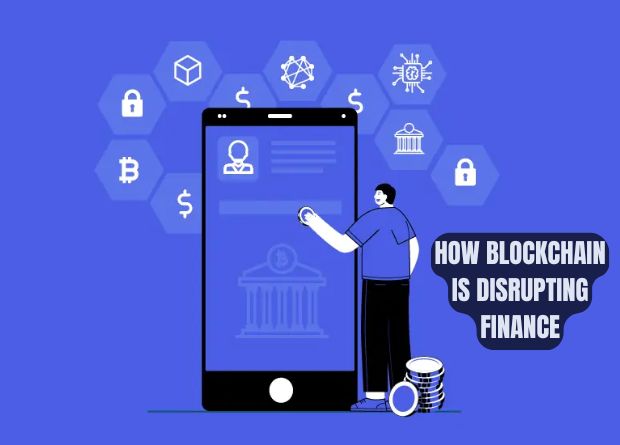In recent years, blockchain has evolved from a buzzword into a force capable of transforming entire industries—none more so than the world of finance. From traditional banking to international payments, the decentralized nature of blockchain technology is not just tweaking the system—it’s rewriting the rules. But what exactly is blockchain, and how is it reshaping the financial world as we know it? This beginner-friendly guide explores the revolutionary impact of blockchain on finance and why it matters to individuals and institutions alike.
What Is Blockchain?
Blockchain is a decentralized, distributed ledger technology that records transactions in a way that is secure, transparent, and immutable. Instead of relying on a single central authority (like a bank or government), blockchain operates on a peer-to-peer network of computers (nodes), each holding a copy of the entire ledger. Every new transaction is grouped into a “block,” which is verified and added to a chronological chain of previous blocks—hence the name “blockchain.”
This method of recording transactions eliminates the need for intermediaries, reduces the risk of fraud, and significantly enhances transparency and efficiency.
Key Features of Blockchain Relevant to Finance
-
Decentralization – No single entity controls the system.
-
Transparency – Transactions are visible to all participants on the network.
-
Security – Cryptographic encryption protects data from tampering.
-
Immutability – Once recorded, data cannot be altered or deleted.
-
Smart Contracts – Self-executing agreements coded into the blockchain.
These features make blockchain particularly suitable for financial applications where trust, speed, and security are critical.
How Blockchain Is Disrupting Finance
1. Cross-Border Payments
Traditional international money transfers are slow, expensive, and involve multiple intermediaries. Blockchain-based payment networks like Ripple (XRP) and Stellar (XLM) are enabling real-time, low-cost international payments without relying on correspondent banks. This is especially transformative for remittances and emerging markets.
2. Decentralized Finance (DeFi)
DeFi refers to financial services—like lending, borrowing, and trading—built on blockchain platforms (primarily Ethereum) that operate without central authorities. With DeFi, anyone with internet access and a crypto wallet can:
-
Earn interest on crypto holdings.
-
Borrow assets without credit checks.
-
Trade tokens through decentralized exchanges (DEXs) like Uniswap and SushiSwap.
This democratizes access to financial tools traditionally limited to the privileged few.
3. Tokenization of Assets
Blockchain allows real-world assets—like real estate, stocks, art, or commodities—to be represented digitally as tokens. These tokens can be traded more easily and fractionally, allowing greater liquidity and access for smaller investors.
-
Example: A $1 million apartment could be tokenized into 1,000 parts, allowing people to invest as little as $1,000.
This opens up previously illiquid markets to a broader audience.
4. Smart Contracts and Automation
Smart contracts automatically execute and enforce agreements without human intervention. In finance, they are used to:
-
Automate loan disbursements and repayments.
-
Manage insurance claims.
-
Facilitate transparent supply chain financing.
Smart contracts reduce paperwork, minimize human error, and increase operational efficiency.
5. Blockchain in Banking
Traditional banks are beginning to adopt blockchain for internal operations such as:
-
Clearing and Settlement: Instant and transparent trade settlements.
-
Know Your Customer (KYC): Shared digital identity management across institutions.
-
Fraud Detection: Improved tracking and traceability.
JPMorgan Chase, Goldman Sachs, and Santander are among the banks actively exploring blockchain solutions.
6. Digital Identity and Credit Scoring
For billions without access to formal banking, blockchain can provide secure digital identities and alternative credit scoring methods based on transaction history and behavior on the blockchain.
This is a game-changer for financial inclusion, especially in underserved regions like Sub-Saharan Africa and Southeast Asia.
Real-World Use Cases
-
Visa has launched Visa B2B Connect, a blockchain-based network for cross-border corporate payments.
-
Mastercard is investing heavily in blockchain R&D and partnerships.
-
Central Banks around the world, including those in China, Nigeria, and the EU, are experimenting with CBDCs (Central Bank Digital Currencies).
These developments highlight how blockchain is becoming a foundational layer in the future of finance.
Challenges and Limitations
Despite its potential, blockchain in finance is not without challenges:
-
Regulatory uncertainty in many regions.
-
Scalability issues: Public blockchains like Ethereum can become congested.
-
User education: Many people don’t yet understand how to safely use blockchain tools.
-
Security vulnerabilities: Not the blockchain itself, but smart contracts and platforms can be hacked if poorly coded.
Governments and developers are actively working on these issues to make blockchain more robust and user-friendly.
Also Check:
- Must-Have Chrome Extensions for Productivity
- Best Tech Podcasts to Follow This Year
- How to Build Your Own PC: Beginner’s Guide
- 5G vs Wi-Fi 6: What’s the Difference?
- Tips to Boost Your Internet Speed at Home
The Future of Finance: Decentralized and Transparent
As blockchain matures, it promises a more inclusive, efficient, and transparent financial ecosystem. We are moving from centralized gatekeeping institutions to user-empowered networks. With continued innovation and collaboration between tech companies, regulators, and financial institutions, blockchain could soon become the default infrastructure for global finance.
Whether you’re a casual investor, a small business owner, or simply curious about the future, it’s worth paying attention to how blockchain is rewriting the rules of money.
External Resources:
